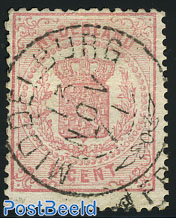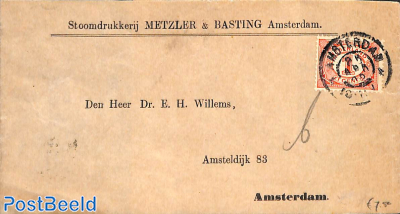Unisciti a noi in un viaggio intorno al mondo! Ogni settimana fino al 25 maggio sconto del 10-20% sui francobolli fino all'anno 2020 compreso di diversi continenti! Clicca qui per vedere tutti gli sconti.
Ogni primo giorno del mese teniamo un'asta con lotti unici. I lotti vengono sommati fino al 15 del mese precedente compreso e le offerte sono sempre possibili a partire dal 16.
Ogni settimana: migliaia di nuove aggiunte al nostro negozio online.
Francobolli con categoria Annulli (speciali)
Many stamp collectors and postal history collectors collect cancellations in addition to the stamps themselves. A cancellation is a mark applied on a postage stamp or postal stationery to deface the stamp and prevent its re-use. Cancellations come in a huge variety of designs, shapes, sizes and colours. The terms "postal marking" and "cancellation" are used to refer specifically to the part that contains the date and posting location. The portion of a cancellation that is designed to deface the stamp and does not contain writing is also called the "obliteration" or “killer”. Some stamps are issued pre-cancelled with a printed or stamped cancellation. Cancellations can affect the value of stamps to collectors, positively or negatively. After the first adhesive postage stamp, the Penny Black, was issued in 1840 by Great Britain, the postal authorities realized they needed to find a method for preventing reuse of the stamps and thus issued hand stamps to apply cancellations to stamps on envelopes as they passed through the postal system. In other countries, and where hand stamps were not available, stamps often were cancelled by marking over the stamp with a pen. Pen cancellations were used in the United States into the 1880s, and even today, if a postal clerk notices a stamp has escaped cancellation he marks it with a pen or marker. High speed cancellation machines were first used in Boston, U.S.A. between 1880–1890.
più1862, 80c rosa, unused hinged

|
500,00 €
|
Nuovo (con linguella)
|
Aggiungi al carrello |
1875, 1.5c pink, C. Middelburg

|
60,00 €
|
Usati o CTO
|
Aggiungi al carrello |
1902, NVPH No. 51 on newspaper wrapper
|
5,00 €
|
Cartolina o busta
|
Aggiungi al carrello |
PostBeeld non vende solo francobolli. Puoi rivolgerti a noi anche per albums, cataloghi e accessori.

